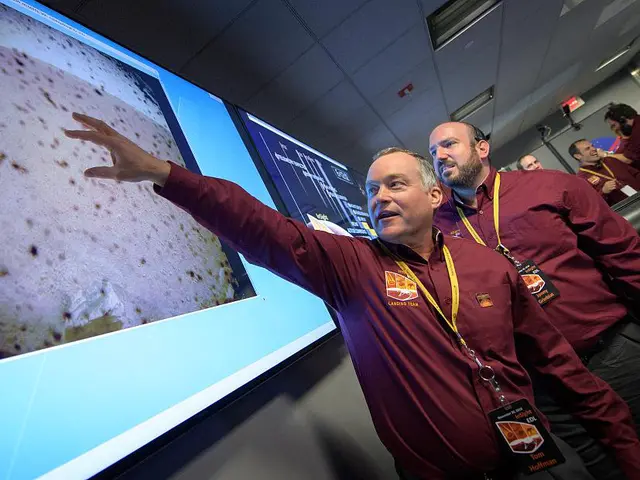An international team has released the first direct seismic measurements of the Martian outermost layer, offering a way for scientists to understand the red plant's subsurface structure and keep detecting potential signs of life.
The study published Monday in the journal Nature Geoscience showed that Mars has a moderate level of seismic activity, intermediate between Earth and the moon.
These were the preliminary results from NASA's InSight mission, which landed a probe on Mars in November 2018.
"These data are helping us understand how the planet works, its rate of seismicity, how active it is and where it's active," said Nicholas Schmerr, the study's co-author and an assistant professor of geology at University of Maryland.
The seismic data acquired over 235 Martian days showed 174 seismic events or marsquakes. Of those, 150 were high-frequency events that produce ground shaking similar to that recorded on the moon. The seismic waves bounce around as they travel through the heterogeneous and fractured Martian crust.
The other 24 quakes were predominantly low-frequency events. Three showed two distinct wave patterns similar to quakes on Earth caused by the movement of tectonic plates, according to the study.
"Based on how the different waves propagate through the crust, we can identify geologic layers within the planet and determine the distance and location to the source of the quakes," said Vedran Lekic, the study's co-author and an associate professor of geology at University of Maryland.
The chemistry around thermal vents at the deep ocean ridge on Earth provides the energy for early life. Therefore, if there is liquid magma on Mars, and if scientists identify the most geologically active area on Mars, it might lend a clue to future missions searching for the potential for life, according to Schmerr.
InSight, the first mission to explore Mars' deep interior, landed in the Elysium Planitia of Mars on Nov. 26, 2018. It will investigate processes that shaped the rocky planets of the inner solar system more than 4 billion years ago.
(ASIA PACIFIC DAILY)
 简体中文
简体中文





